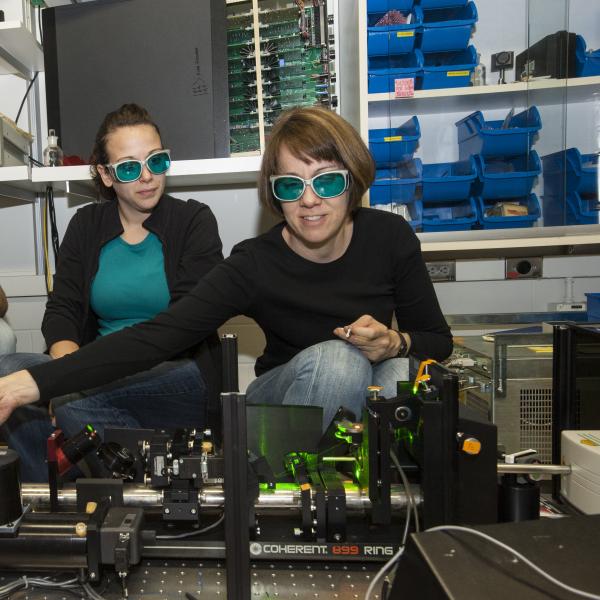The goal of Professor Hayes' research group is a basic understanding of the structure and properties of different types of inorganic systems, including semiconductors and other optically and electronically active materials.
Research Interests
Optically-pumped NMR: Development and application of optically-pumped (OPNMR) and optically-detected (ODNMR) NMR of bulk semiconductors and quantum wells to gain insight into the interplay between photogeneration of conduction electrons, electron spin polarization, and resulting nuclear spin polarization. Surface and interface structures, as well as characterization of defects in the materials and spin diffusion processes that can polarize distant spins are being studied. These research foci have particular relevance to solar energy materials and LED applications.
Carbon capture & sequestration: NMR characterization of CO2 (and CH4) chemisorption and physisorption in materials tailored for greenhouse gas removal. Some studies are by in situ high-pressure high-temperature CO2 NMR studies of gas, liquid, and supercritical CO2 in the presence of geological (porous) rock samples and in materials designed for the capture of CO2 or other gaseous materials (such as methane, and acid gases including SOx, NOx).
Computation of NMR tensors and spectra prediction: Creation of an NMR library of spin-1/2 and quadrupolar tensors through The Materials Project, computing NMR tensors from crystal structures of dominantly inorganic compounds. Density functional theory calculations of NMR tensors in CASTEP and VASP.
NMR crystallography: using the tensor catalogue, we work on refinements of atomic coordinates for materials where the NMR and X-ray diffraction lead to slightly different predictions of structure. NMR can be used to refine atomic coordinates, especially for species such H-atoms.
Solid-state NMR studies on quadrupolar (nuclear spin, I > ½) systems: diverse nuclei studied, including many Group III inorganic molecular clusters that are deposited as thin metal oxide films used as dielectrics in semiconductor devices. The focus has been predominantly 27Al, 69Ga, 71Ga, 51V measurements and modeling of the quadrupolar lineshapes.
Topochemistry: solid-state single crystal-to-single crystal photo-cycloaddition reactions can be monitored via solid-state NMR, given our unique hardware for incorporating laser irradiation at the sample space. NMR was able to determine reaction kinetics of cinnamic acid to truxillic acid conversions, and examine additional derivatives.





